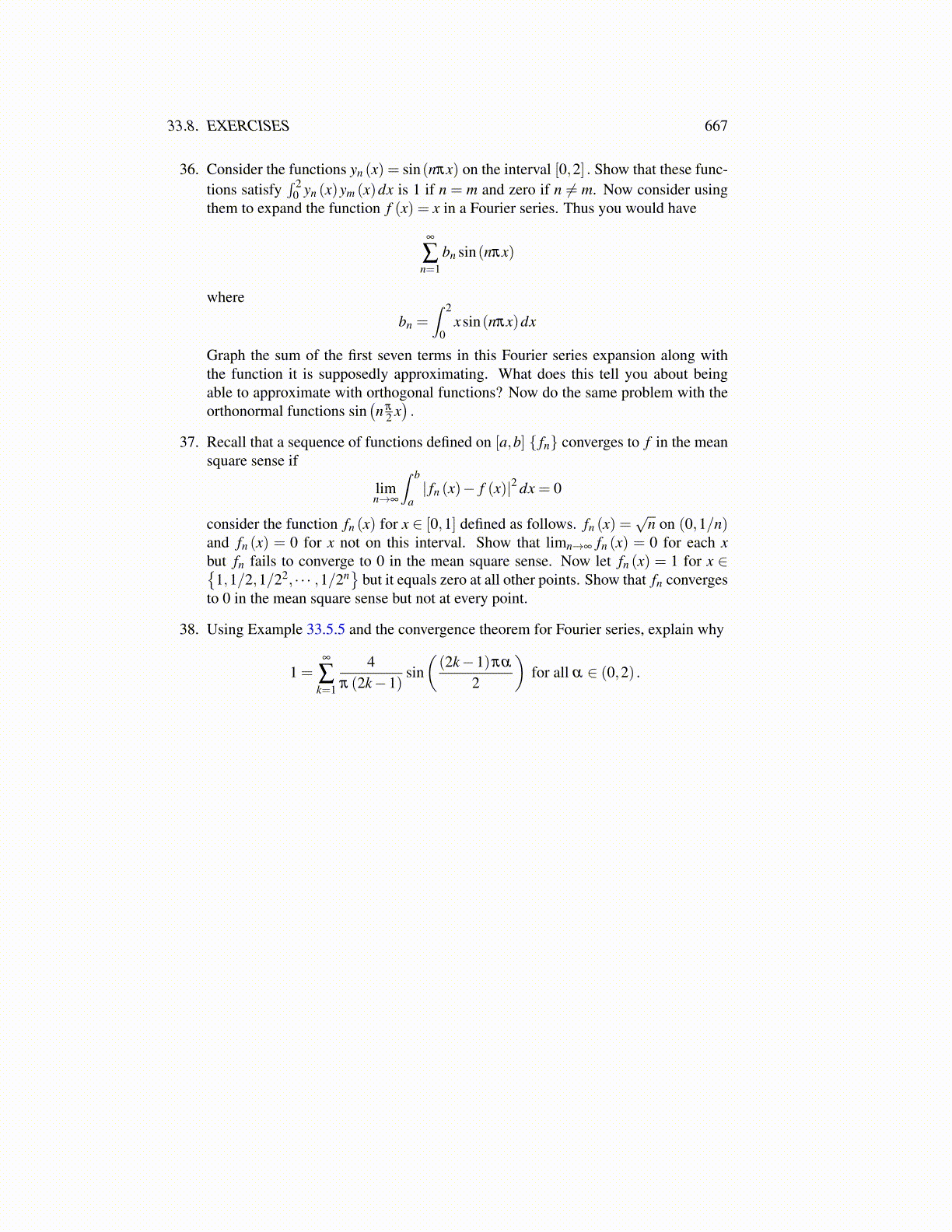
33.8. EXERCISES 667
36. Consider the functions yn (x) = sin(nπx) on the interval [0,2] . Show that these func-tions satisfy
∫ 20 yn (x)ym (x)dx is 1 if n = m and zero if n ̸= m. Now consider using
them to expand the function f (x) = x in a Fourier series. Thus you would have
∞
∑n=1
bn sin(nπx)
where
bn =∫ 2
0xsin(nπx)dx
Graph the sum of the first seven terms in this Fourier series expansion along withthe function it is supposedly approximating. What does this tell you about beingable to approximate with orthogonal functions? Now do the same problem with theorthonormal functions sin
(n π
2 x).
37. Recall that a sequence of functions defined on [a,b] { fn} converges to f in the meansquare sense if
limn→∞
∫ b
a| fn (x)− f (x)|2 dx = 0
consider the function fn (x) for x ∈ [0,1] defined as follows. fn (x) =√
n on (0,1/n)and fn (x) = 0 for x not on this interval. Show that limn→∞ fn (x) = 0 for each xbut fn fails to converge to 0 in the mean square sense. Now let fn (x) = 1 for x ∈{
1,1/2,1/22, · · · ,1/2n}
but it equals zero at all other points. Show that fn convergesto 0 in the mean square sense but not at every point.
38. Using Example 33.5.5 and the convergence theorem for Fourier series, explain why
1 =∞
∑k=1
4π (2k−1)
sin((2k−1)πα
2
)for all α ∈ (0,2) .